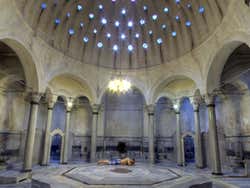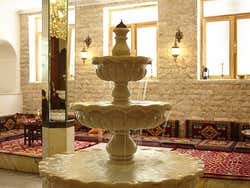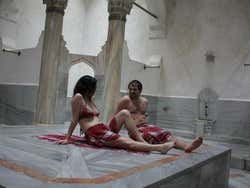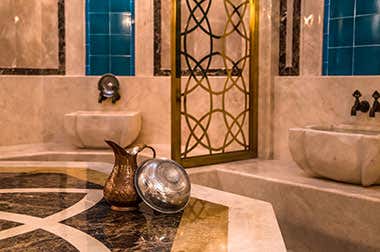
Turkish Baths
Turkish Baths are the Ottoman version of Roman thermal baths, a place that combines cleanliness and relaxation with social and cultural interaction.
Etymologically, the word Hammam (the name of these baths in Arabic) means "that which gives off heat," although these days, and depending on the dialect, it's equivalent to "bath."
During the 18th century, Istanbul boasted more than 150 bath houses, with many of them built by the architect Sinan.
What is a Turkish Bath?
A traditional Turkish bath is a more humid version of a sauna and is divided into parts: atrium, cold, mild, and caldarium (hot). The inside of the baths is usually decorated with marble, a material that retains heat well.
In the majority of baths in Istanbul, entry includes an exfoliating wash and different massages. We should mention that a Turkish massage can be quite rough, and perhaps could be considered similar to a Thai massage.
The Most Famous Turkish Baths
Of course, Istanbul has hundreds of hammams. The vast majority are traditional Turkish baths, although in recent years more Western-style spas have begun to spread.
Given that you're in the very heart of ancient Constantinople, you should definitely try a traditional bath. From the many options available, we recommend the Aga Hamami, located very close to Taksim Square.
We recommend a Turkish bath in Cagaloglu Hammam, a luxurious bath located in the heart of Istanbul, or the exclusive spa in DoubleTree by Hilton Istanbul, which offers several options to enjoy a great Turkish bath experience.
Our favourite Turkish Baths
Cemberlitas Hammam
Suleymaniye Hammam




